|
|
||
|
||
|
Privacy Policy | Editorial Policy | Profit Policy | Join the Association | List of Members | Contact us | Index | Links |
||
|
Back Go to page: 1 2 3 4 5 6 7 8 9 10 11 12 13 14 15 16 17 18 19 20 Forward |
||
|
Contents.
Impressive people I've met - John Goodrick.
|
||
|
Arthur’s Articles.
My United States Air Force Secondment.
In November 1966, the Australian Prime Minister, Harold Holt, made an announcement promoting his support for the American President, Lyndon Baines Johnson, ‘All the Way with L.B.J.’, by committing a squadron of our Canberra bombers to his war effort in Vietnam. He did not announce where those bombers would come from nor where they would be based in Vietnam. Australia had three Canberra Squadrons at the time, two in Amberley, Nos 1 and 6 Squadron and one in Malaysia at RAAF Butterworth, No 2 Squadron.
Within days, I received a posting to Vietnam, attaching me to the
Australian Embassy in Saigon, without a
Annette and I turned to quick debate. Our daughter, Leanne, was only fifteen months old and she was pregnant with our son, Ash. Would she stay in our Married Quarter in Laverton? Would she care for the family there or would she go home to Ipswich to her mother and have her assist in caring for the two children, once the child arrived? Debate quickly ceased and she decided to return home to Ipswich. We packed our meagre belongings into storage, vacated the Married Quarter and headed home, changing my exit flight details from Melbourne to Brisbane.
We duly arrived home in Ipswich. Problem Number One! Annette’s mother had taken in a border who arrived at our church and advertised for accommodation. This was Sammy who hailed from Herisau in Switzerland. He was the Chief Engineer for Brown Boveri in Switzerland, who was sent to Australia to oversee the construction of the power station being built in Ipswich at Swanbank.
Sammy was an affable, short, rollie poly man, (whose size was befitting one from Appenzell, which was famed for citizens coming from ‘the land of the little people.’) Sammy had a car which was taking up the garage space where Annette had planned to keep our much-loved Holden FB sedan. Sammy generously permitted Annette to drive his Toyota Corona whenever she needed a car. Next solution was to find a buyer for this immaculate FB Holden.
In the abbreviated time we had left before I fronted up at Brisbane airport to take my flight to Singapore, I hawked our magnificent car around the second-hand car yards in Ipswich and received knock back after knock back. One dealer agreed to take the FB Holden Special off me at a give-away price but also issue me with a credit note for a few hundred dollars more if I bought a car from him on my return. I said I wanted to buy a new model, which he agreed and the deal was done. I walked out of his yard with a promissory note in my pocket, but without our perfect Holden FB Special and a very special sedan it had been. On my return from Vietnam, we had a court case about that promissory note, but that will appear in a few issues time!
The 24th of January 1967 came around all too soon. I kissed and hugged little Leanne at my mother-in-law’s home in Ipswich. Annette drove me to the Brisbane airport in Sammy’s Toyota, and soon we were saying our goodbyes for what we expected to be twelve months. In fact, I came home in the September on R & R when America accepted Sydney as an R & R destination. Seeing I had been in Vietnam with the advance party of an Australian Unit, although seconded for the first few months to the USAF, I was chosen as the first to join the plane-full of American servicemembers who were on the first R&R flight into Sydney.
I was told there would be a huge public welcome to these allies which may delay my return home. I swapped my first position with a Flight Sergeant, also from the advance party, ‘Bones’ Maxwell, a Clerk Equipment Accounts, who was very much a party person, and had in fact, given Nancy Sinatra his slouch hat on stage at the Viper Club, the NCO Club in Phan Rang, where we often ate, after her ‘These Boots are Made for Walking’ show. I was next in line three days later, and I avoided the loss of time in a publicity promotion of welcoming the GIs and Airmen of the United States to Sydney.
A teary Annette drove herself back to Ipswich alone, to join her mother, our daughter, and Sammy for a long haul without me. I settled back in the Qantas 707, and after about eight hours, arrived in Singapore, my first ever overseas destination. I was met at Changi airport by my sister, Ellen, and her husband, Roy, and two little girls, Sue-Ellen, and Natalie, who was born in Singapore, while on their first of two Australian Army postings to Singapore.
They drove me to the Hotel Singapura where I had a room on the ground floor with a satay stand outside my window. When I finally returned to my hotel room, much later that night, the smell of freshly cooked satays wafted through my room to lull me to sleep.
Inside Changi Airport in Singapore
It was Ellen and Roy’s ten-pin bowling night, so we headed to their bowling alley. There I met a guy who had completed the Vietnamese course the year before me, Ray Rogers, and his wife, Delia. I was to meet them often in later life, as we served with Ray in various units. We also added another language to our knowledge of Vietnamese. Ray learned Japanese and I Chinese Mandarin, when all military linguists were encouraged to be fluent in two languages.
Annette worked with Delia in Hong Kong at the Lan Tao Island Development Company. In May 2019, we had the opportunity to travel to Lan Tao Island and view the dream that their company had some forty years earlier from the box seat of a sky rail cabin. Annette lamented that she had not taken up her boss’ warning to buy into the development in 1982 when offered to her. Her return would have been much better than bank interest!
Singapore local time was getting late, which meant my body was still on Australian time, and I felt very tired. After ten-pin bowling had finished, Ellen and Roy took me to Bugis Street, where they enjoyed pointing out the pretty local girls who were in fact, ‘shims’, (half boy – half girl). They also warned me to avoid the children who challenged tourists to play ‘Tic, Tac, Toe,’ where they preyed upon unsuspecting tourists to play them for money, in which the tourist never won a game! Ellen and Roy returned me to my bed in the Hotel Singapura, and within minutes, with the aroma of cooking satays in my nostrils, I was fast asleep.
The next morning, a bus picked me and a few other short haired guys
which I discovered were also in the RAAF and heading for a PANAM flight
to Saigon, which I discovered was known as Tan Son Nhat. We were met on
arrival at Tan Son Nhat by an Australian Movements Officer who told us
to
Once the Caribou took off, the announcement was made that our destination was Phan Rang in Central Vietnam, where the host unit was the 35th Tactical Fighter Wing of the USAF. F-100 Super Sabres took off and landed at less than a minute interval 24 hours a day. Now we knew, Phan Rang, in Central Vietnam, was our destination. The locals had a different dialect to what I had been taught. I spoke northern Vietnamese. Down south, they spoke southern Vietnamese. Would I have to modify and translate every word I said. The simple ‘toi’ for ‘I’ or ‘me’ would be ‘tui.’ This could be fun. Much more ‘fun’ than I had envisaged.
We landed at Phan Rang Air Base and soon found ourselves in the Airmen’s ‘chow hall’ at Red Horse, 554 Civil Engineering Squadron, (554 CES,). I shall never forget that meal! The plastic tray had several spaces for several meats or vegetables, not to mention, desserts. I can recall my cold ice-cream was placed alongside my hot potatoes while my hot green beans were slopped onto my tray next to my cold jello (read, jelly!) Of course, the ice-cream did not stay solid for long, and the jello quickly ran into a pool of red water.
The Australian RAAF officer who welcomed us after our meal, was then Squadron Leader, (later in life, Group Captain,) Dick Gurevich, a Works Officer who was with Number 5 Airfield Construction Squadron and who had come to Phan Rang to establish Detachment B, of which we would be attached, at least on paper. 5 ACS Det B. But first, we would be seconded to the 554 CES (Red Horse,). We were given tasks in Red Horse commensurate with our capabilities.
Our grader drivers went to work immediately driving Red Horse graders. Our carpenters, (chippies,) were put into the Red Horse lumber yard. Cliff Buckley, our Sergeant Aerodrome Defence Guard was put into Red Horse Orderly Room and helped control the perimeter Security Guards, and as there were no American trained Vietnamese linguists, I was put into the Civilian Labour Office at Red Horse to look after the Vietnamese workers, mainly carpenters, painters and plumbers, who were coming towards the end of building phase of USAF buildings who then faced redundancy.
Here I must show you that there were no carpenters, electricians,
plumbers, or painters with any recognisable qualifications. It was a
case if a Vietnamese guy woke up in the morning and decided he wanted to
be a carpenter, he would go to the downtown recruiting office in Phan
Rang (City)
Taken to the air base, he would be given tools of his trade, and his compatriots would show him how to use them! Within days, he would be in my office in Red Horse and with only days of experience behind him, and he would ask to be promoted to the next level, that of V5. You have guessed it, within days, he thought he was good enough to be promoted to V6. Thus, most of the Red Horse locally engaged workers sat on level V6.
Red Horse chiefs saw my arrival as a blessing, for they could pass their Vietnamese workers on to me and not make them redundant. As for me, it saved me from heading down to the Labour recruiting office in Phan Rang. Red Horse willingly offered me their workers who were about to be made redundant. Another advantage was that these guys all had passes to the base, whereas, if I recruited locals, I then had to wait from the local security authorities to issue passes.
Slowly, one by one, I moved local workers from the Red Horse payroll to the 5ACS payroll, ready to help us build our sleeping areas, our messes, and our headquarters down on the airfield. Also, I became involved in every episode that required an interpreter to resolve a dispute between the parties, pass on a request between parties, pass on instructions, settle time off issues, and intercede with Red Horse, reasons why a worker should be promoted above his colleagues. In fact, it took until the November 1967 for Phan Rang to gain the first US Vietnamese speaking military interpreter that graduated from their Language School in Monterey, California.
Initially, housing was a hoot! Red Horse’s own timber buildings were not yet ready for occupation, so they lived in ‘hootches’ which roughly equates to eight-man tents! They put one Australian in one of eight of these hootches. The one I was in had a very agitated guy who persisted in telling me that although he wore a USAF uniform, he was not an American. He was a Puerto Rican, and an incredibly angry one at that!
Our works Supervisor, Warrant Officer Anderson, was placed in the ‘hootches’ and enjoyed the camaraderie in the Red Horse Senior NCO Club on the site of the ‘hootches’ but was removed a few days later to the officer lines. We worked out the explanation in that their Warrant Officers held commissioned rank, and besides that, as WOFF Anderson wore eagle insignias on his epaulettes, we thought that some Americans may consider him a ‘Bird Colonel.’
I made good friends with the Red Horse Top Sergeant, a Chief Master Sergeant, (above left), equivalent to our Warrant Officer Disciplinary. He was a big man, and in his spare time back in the States, he was a professional wrestler. He told yarns how he used to swing his fists at the audience, several feet away from him, and so earned the reputation of being ‘the baddie.’ Yet in himself, he was a meek, mild, and friendly guy. We travelled together around the base often. He also claimed to listen to his radio each night and listened to ‘Hanoi Hannah,’ the equivalent of ‘Mata Hari.’ On the night the eight of us arrived, he claimed that ‘Hanoi Hannah’ welcomed us to Phan Rang by name! Wasn’t that to be a secret which we only discovered once we boarded the RAAF Caribou?
Another American who we spent much time within the Red Horse Senior NCO’s Club was a Tech. Sergeant (E6) by the name of Stan Koropsak, or ’Kuppy’ to everyone who knew him. I have written about ‘Kuppy’ in an earlier edition of RAM. ‘Kuppy’ was a character. He had fought in World War Two, and Korea, as a Bombardier, rising to the rank of Lieutenant Colonel, yet accepted a reduction in rank to Airman E6 so that he could add ’Vietnam’ to his list of achievements.
Once No. 2 squadron arrived in April, ‘Kuppy; spent much time in the Sergeant’s Mess and once his secret was revealed, we understood why. On the night he left Phan Rang, he invited this RAAF friends to the airport, telling us that he had a surprise for us. When we arrived at the airport, we saw this Lieutenant Colonel all dressed in his flashy best uniform, ready to fly out. ’Kuppy’ was indeed a Lieutenant Colonel. Such reduction to the ranks for an officer could never happen in the Australian Defence Forces.
I recently met up again with one of our 5 ACS Det B carpenters who was sent to work in the lumber yard at Red Horse. Dan Kinsella told me after all these years about the faulty equipment that Red Horse had to contend with. I had known of the forklift that Dan was asked to drive that had no hydraulic steering, but Dan battled fiercely to complete the task at hand. He told me that one day he was driving a Red Horse forklift with the forks down, when the front wheel of the fork-lift fell off. Had it not been that the forks were down, the vehicle would have rolled over, and could have caused Dan a significant injury.
As a member of a ‘foreign service’ on secondment to the USAF, I gained many privileges. Firstly, I had to sit for and gain my USAF driver’s licence, which allowed me to drive up to the heaviest of USAF tip trucks. While at No. 1 Flying Training School, in the late 1970’s, I gifted my USAF Drivers’ Licence and other paraphernalia of my time with Red Horse, to the Museum at RAAF Base Point Cook. Then, as I wore glasses, I was sent to the Red Horse Optometrist who issued me with a pair of normal and a pair of sunglasses with the standard GI rims. The Museum was the correct place for them!
|
||
|
|
||
|
We could also use the US postal service, through AFPO 5, San Francisco, California. All postage was free. Annette and I would assess the system by sending two letters at a time, one though AFPO 5 and one via the weekly RAAF Hercules system. AFPO 5 Easily won every time!
We had a USAF member based at Amberley who attended our church in Ipswich. We had it set up that when Annette gave birth to our son in Ipswich hospital, her mother would advise our USAF communicator who lived just down the street from her, and he would send a message to me via the USAF communication system. That system worked perfectly. But the only problem was that it worked coming into me, but I had no access to return the telecommunications back to RAAF Amberley.
Within an hour of Annette giving birth to Ash, a message through the USAF system, via San Francisco, arrived in my office. As I read it, I looked out of the front door of my office and I saw the only RAAF Hercules for the week, taking off! I wrote back through the RAAF system, and two weeks later, Annette knew that I knew that we had a son!
The time came when the Red Horse team had completed their two storey wooden sleeping quarters and were ready for occupation. The tent city of ‘hootches’ were soon cleared, and we moved to the newly completed buildings. They gave the RAAF 5 ACS Det B members all the top floor in one of these new buildings, closer to the Viper Club. Some inspired person, US or Australian, we never found out, had taken a stencil of a kangaroo, and spray painted this kangaroo in red on the front wall of our top floor dwelling.
We Australians were given an allowance to buy our meals. We took / bought most meals at the Viper Club, for NCO’s. Airmen had to trek back to the Airmen’s Club where we had our first meal together on our arrival.
We also found a delightful US Army Mess on the other side of the airfield, which was run by a helicopter squadron. Most of the helicopter pilots were young men who held the rank of Commissioned Warrant Officer, with Grades from 1 to 4. In later years, a Commissioned Warrant Officer 5 was added. They were pleased to accept the cash payment that the Australians paid for their meals, as I say, a delightful change from the mass-produced meals on the Viper Club menu.
One morning, I was resting on my bed. An American Airman First Class, who in those days wore three stripes came in. In November of 1967, those who wore three stripes were re-classified as ‘Buck Sergeants’. ‘Wormie’ was then an Airman First Class who claimed to be a Cherokee Indian Chief. He carried a case of beer. At the foot of my bed, I had a wooden trunk, issued to me by Red Horse Q-store. ‘Wormie’ said, “Swap you that for a case of beer!” pointing to the wooden trunk.
Beer did not interest me; I drank Dr. Pepper or plain Coca Cola. We had a refrigerator on our floor which we all contributed to for the common use. I reckoned that would be my contribution. We were cramped in our new living area where apart from our bed and this wooden locker at the base, we lived within coo-ee of each other. When we would move into our RAAF quarters, there would be no reason to keep this drab wooden box to hold our gear.
We made the deal. ‘Wormie’ sat and chatted for a while, consuming six of the beers he had just traded. All would have been well, except that one of our Senior NCO’s came back to our quarters at lunch time, and enquired if ‘Wormie’ had been in. I said he had and swapped me a case of beer for my wooden locker. He exploded and said that he had swapped ‘Wormie’ his slouch hat for a case of beer! The case of beer minus the six ’Wormie’ drank was shared among our unit members. I had given away my wooden locker and this other person, his slouch hat! It does make you wonder if ‘Wormie’ truly was a Cherokee Indian Chief or was he simply a loud-mouthed con artist?
As work commenced on the No. 2 Squadron RAAF living area, my job was to hang around the Vietnamese workers that I had ‘inherited’ from Red Horse, to offer interpretation when and if needed. Then came the day that the pads for the buildings, having been boarded out, received the wet cement from USAF concrete trucks. My Vietnamese workers battled to control the heavy wheelbarrows of wet cement as they pushed them in a wobbly fashion from the truck to the boarded-up pads. It was heavy work for them.
I remember one day, the 5ACS AdminO came out to the site and saw me ‘doing my thing’, waiting to be called to a local to receive the interpretation of his duties. Communication on the site was usually affected by hand signals, so for the best part, I stood by, waiting! ‘Jimmy Nick’, the AdminO, noticed my idleness and bellowed at me, “Fry, grab a wheelbarrow. In ACS, everyone works.” I obeyed, and I can tell you, I understood why my Vietnamese workers wobbled their barrows. It was heavy work!
So, when anyone says that I have never done a hard day’s work in my life, my mind flashes back to when I assisted pouring the concrete pads for the living quarters and the Mess at Phan Rang. No wonder the Vietnamese workers ate their lunch then took long naps during their lunch hour breaks.
In mid-March, I began sharing my time between 6ACS Det B and the soon to arrive No. 2 Squadron. Two RAAF officers had arrived from Butterworth, Malaysia, where No. 2 Squadron Canberra’s had been based, one an Accounting Officer, one a Catering Officer, to oversee my efforts to engage local staff to work in the living quarters as housemaids, in the kitchen as cook’s assistants, waiters, and general cleaners.
To recruit these workers, I had to go to our downtown recruiting office and select eager, work ready, expectant workers, then go through the formalities of gaining their security clearances to enable then to come on the base. Fortunately, for my ACS workers, these security passes had already been in place for Red Horse. That had saved me many hours of time-consuming work. Any man of call-up age had to be thoroughly investigated if they were draft dodgers or deserters from the ARVN, the South Vietnamese Army. Such deserters were known as ‘cowboys!
I selected a number of workers and having gained their security passes, brought them back to the half-completed buildings almost ready for occupation. I remember lining up the ones chosen for mess duties and housemaids. The Catering Officer, ‘Hugo,’ had the aspirant employees put their hands in front of them as ‘Hugo’ inspected the front and rear of their hands, checking the cleanliness of fingernails. ‘Hugo’ discarded several of them, a task I had failed to complete. These poor aspirants were placed in the back of a 5-tonne truck, and I drove them back the five miles to the main gate of Phan Rang Air Base, where I retrieved their Security passes, and bid them farewell, with their hopes for employment, dashed. (Rat buon!)
Within weeks, the final additions were made to the living quarters, the messes, the headquarters with their revetments for the Canberra’s down on the tarmac, I thanked my Carpenters, Painters, Electricians, and Plumbers, now all Grade V6, paid them their last pay, and retrieved their Security Passes, and drove them, truck after truckload, to the Main Gate. (That was also ‘rat buon’), - incredibly sad, for them as well as me, for I had made good friends with several of my workers, and they were happy to have a foreigner as a friend who spoke their language.
We had completed our task to make a home for the incoming RAAF Canberra bombers with a few days to spare. Although still a member of 5ACS Det B, my secondment to Red Horse had ceased, and my dual allegiance to both the CO of 5ACS Det B and to the temporary CO of No. 2 Squadron still existed with an occasional (friendly?) reminder by ‘Jimmy Nick’ that I was still a member of 5ACS Det B.
Once habitable, I occupied the office that was to be my No. 2 Squadron Labour Office and the Police Office which was at the lower floor of one Aerodrome Defence Guards’ living quarters, with Medical Section at one end without a view and my office at the other end of the ground floor with a view over the whole airfield, the RAAF headquarters, the revetment area and the runways where I saw F-100 Super Sabres take off and land 24 hours a day, with the irregular C-123 Providers and an occasional RAAF Hercules or Caribou land and take off at Phan Rang.
On the 19th April, 1967, all Australians at Phan Rang, the remnants of 5ACS Det B, the No. 2 Squadron support staff who had moved from RAAF Base Butterworth in Malaysia, having left their families in Butterworth, gathered outside the Headquarters building to watch five RAAF Canberra bombers flying in under the Command of the first Commanding Officer of No.2 Squadron, Phan Rang, Republic of South Vietnam, Wing Commander Rolf Aaronson.
On the 1st of May 1967, my posting to No. 2 Squadron, Phan Rang, Republic of South Vietnam took effect. In the next edition, I will continue my memories about my time at 2 Squadron, a very pleasant posting with a few hiccups, and my Rest and Recuperation trip with GIs and USAF members to Australia on the second R & R flight for Americans to come to Australia, when I met our six-month-old son.
|
||
|
|
||
|
The first group of No. 2 Squadron Personnel into Phan Rang – April 1967
Impressive People I met in my Air Force career.
I wish to pay tribute in this edition, to a former School of Radio graduate, and a bloke I considered as one of my closest friends, John Goodrick, a former Warrant Officer Signals Operator, (SIGSOP,) in the Air Force and a valuable Civil Aviation Safety Authority officer in his retirement career post Air Force. I am convinced that when John was made in Tasmania just over seventy -four years ago, (18th September 1947, in fact,) they broke the mould!
I had the privilege of serving with John on five units, which I cannot remember any other person with whom I served so many times. I observed him to be a highly respected operator and a great ambassador for the communication world. At the last unit we both served at, Joint Telecommunications Unit in Melbourne, John was the Warrant Officer in charge of training. He thoroughly enjoyed keeping his fellow operators up to date with every new system or device available to them.
John and Marlene Goodrick
He was highly respected in Civil Aviation Safety Authority when he took his well-honed skills across to CASA after he took his discharge from the Air Force. I know many Radio School graduates benefited the Air Force with the skills they began at Radio School, and later took them into civilian employment and many have made their mark in society, thanks to their early beginnings at Radio School.
John had another talent. When we both took our farewell from the Air Force, we both moved to Southern Queensland, and kept up our long acquaintance. We were the nucleus of a gourmet food club of gourmands, which Wayne Duthie chose the name of ‘F’eastern Faire’, which was a contraction of ‘Far Eastern Fair’. Membership was conditional upon two criteria: that the member and his spouse had served in Southeast Asia and that they enjoyed any type of Asian cuisine.
Initially, we met every two months at a restaurant that served Chinese, Indian, Indonesian, Thai, Japanese, Malaysian, or any other style which fell into the spectrum which was either served to us, or we cooked it at our table. We endured flooded chandeliers overflowing onto our table. We learned to do the Miner’s Dance in a Japanese restaurant. We watched waiters chasing flapping fish over the floor which had jumped out of their tank in a Chinese Restaurant. We had fun and frivolity wherever we took F’Eastern Faire.
|
||
|
|
||
|
But John performed a different task over those twenty years and opened a new side of his personality to us. He was our perennial Adjudicator. When we booked, we alerted the owners of the restaurant that we were a gourmet food club and would be voting on their establishment. At the end of the meal, John would call for a vote in three categories: the restaurant, the food, and the Food Master for the evening.
John kept us in mirth and great entertainment for those twenty years. In fact, I believe that several diners only came along just to watch John conduct his performance. He would have every diner give a mark out of ten for the three categories. Then he would collate the scores and announce his decision, often reducing the correct collective score to a minus figure and minus well outside the top score of ten. But it was all in fun, with many restaurant owners anxious to hear how their restaurant had scored. They had not realised that this scoring was really a ‘roast’ on the diners attending.
When John died in October 2012, we only held one more dinner, and with due deference to John, knowing no one could ever replace him as the most extraordinary adjudicator, par excellence, that ever existed, we did not select an adjudicator that evening as we knew no one could out-perform John at this task.
Just before his passing, and on his 65th birthday, many of his former friends in the communication sector of the military and C.A.S.A. gathered at his and Marlene’s home in Scarborough to recognise the important parts he played in his working career. He had made a tremendous contribution wherever he went.
On that occasion, when he knew he did not have much longer to live, I put my arm around his shoulders and said, “Mate, you cannot leave us, you are the only person in the world who can verify my wild stories!” John laughed as his whole body shook and I felt every bone in his weakened body rumble through my arm.
There are many other memories I could relate about John. One of which
was his love for playing Rugby Union football. When we were in Hong
Kong, we did not have sufficient players in our Unit for a team, so we
welcomed some Australian and British civilians into our ranks. Our club
was ‘The
We played all local and visiting military teams including the French training ship, the S.S. Forbin; the HMAS Parramatta; the Woodlands team from Singapore; the Black Watch on their last weeks in Hong Kong, when they had enough alcohol to last them through the final weeks in the Colony, until they invited the Koalas into their Red Hackle Club, after which, not a drop of alcohol was left on the premises. The final result was always the same. The visitors around fifty; the Koalas – Nil. But we always took pleasure in knowing that on every occasion, the Koalas won the drinking competition.
We closed off the 1973 Rugby Union season at the China Fleet Club in Wan Chai, Hong Kong Island. We had made friends with the owner of a company, Meadow’s Freight, who had its roots in Sydney and imported Australian beer, spirits, and pies from Australia into Hong Kong.
Meadow’s Freight provided a wonderful evening of Australian beer (Fourex,) and Australian pies, (Four and Twenty.) A great night was had by all members and their wives and girlfriends. Nine months from that magnificent event, ten of our members’ wives, including John’s wife Marlene, and my wife, Annette, gave birth including one British couple who had given up hope of having children after spending twenty childless years! John’s conclusion? “It must have been something in the pies or the beer! “
On our second and last tour of Hong Kong, John and Marlene were on their third tour in the Colony. Midway through our tour, John was moved out of the blocks at Pokfulam where we were quartered and the Goodrick’s moved to the New Territories, at Hong Lok Yuen. The Australians’ Married Quarters there were most pleasant, ‘out in the country’, two storied attached dwellings with a real ‘Country Club’ feeling. When the Goodricks had weekend social events on down in Hong Kong Island, they would return to Pokfulam and ‘slum it’ at the Fry’s residence on the ninth floor overlooking the water towards Lan Tao Island, with all the hustle and bustle of Hong Kong island only a short drive away, but hours lost in stop-go slow moving traffic.
When the Fry’s wanted a weekend ‘getaway’ in the country, they would head towards the Goodrick’s country retreat at Hong Lok Yuen, where a much quieter weekend awaited them, away from the traffic that was part of their daily life.
At his funeral in Redcliffe in 2012, many communicators were present from his military units and his C.A.S.A colleagues from when he flew FIFO from Redcliffe to Canberra every week, to say goodbye to one of the greatest contributors to our small section of the aviation and telecommunications industry. One of the ex-military personnel should have thought of this, but it was Ian Gibson’s wife, Julie, who suggested that we form up as a guard of honour as John’s casket left the chapel. We did just that to say farewell to a legend who no longer would be among us.
John’s memory will live with us for ever for the great worker he was, the devoted husband and father he was, the great footballer he was, and one of the greatest Fine Food Club Adjudicators he was, but most of all, a great mate to many.
|
||
|
Last night my wife asked me if I’d seen the dog bowl. I said “I didn’t know he could.”
|
||
|
Skyland News.
Anyone who was in Moresby in the 1970’s and was engaged in aviation will remember the Skyland News. This great little magazine, which was produced by two blokes, no names, no pack drill, but their initials were Mal and Sharpy, was a “must read” as it took the piss out of Air Niugini, ATC and all things aviation.
You can read the January 1979 edition HERE.
|
||
|
|
||
|
|
||
|
Back Go to page: 1 2 3 4 5 6 7 8 9 10 11 12 13 14 15 16 17 18 19 20 Forward |
||

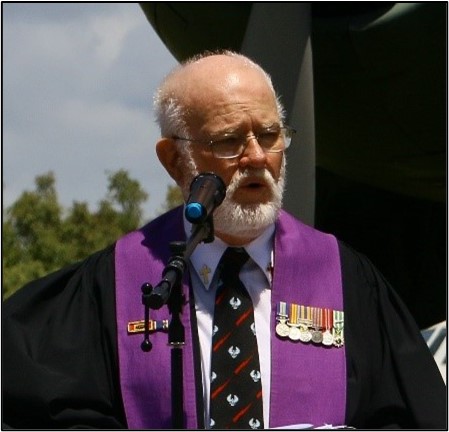
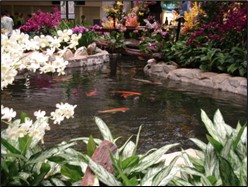
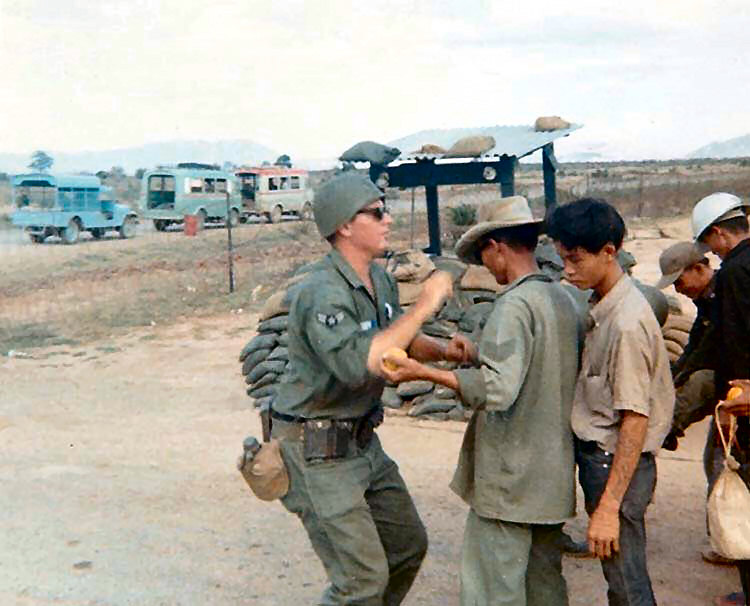 and apply for a carpenter’s job. If there were no carpenter’s positions
on offer that day, he could choose another occupation, a painter for
instance. With his security papers in order, he would be recruited,
without any experience, as a V4 worker of his choice.
and apply for a carpenter’s job. If there were no carpenter’s positions
on offer that day, he could choose another occupation, a painter for
instance. With his security papers in order, he would be recruited,
without any experience, as a V4 worker of his choice. 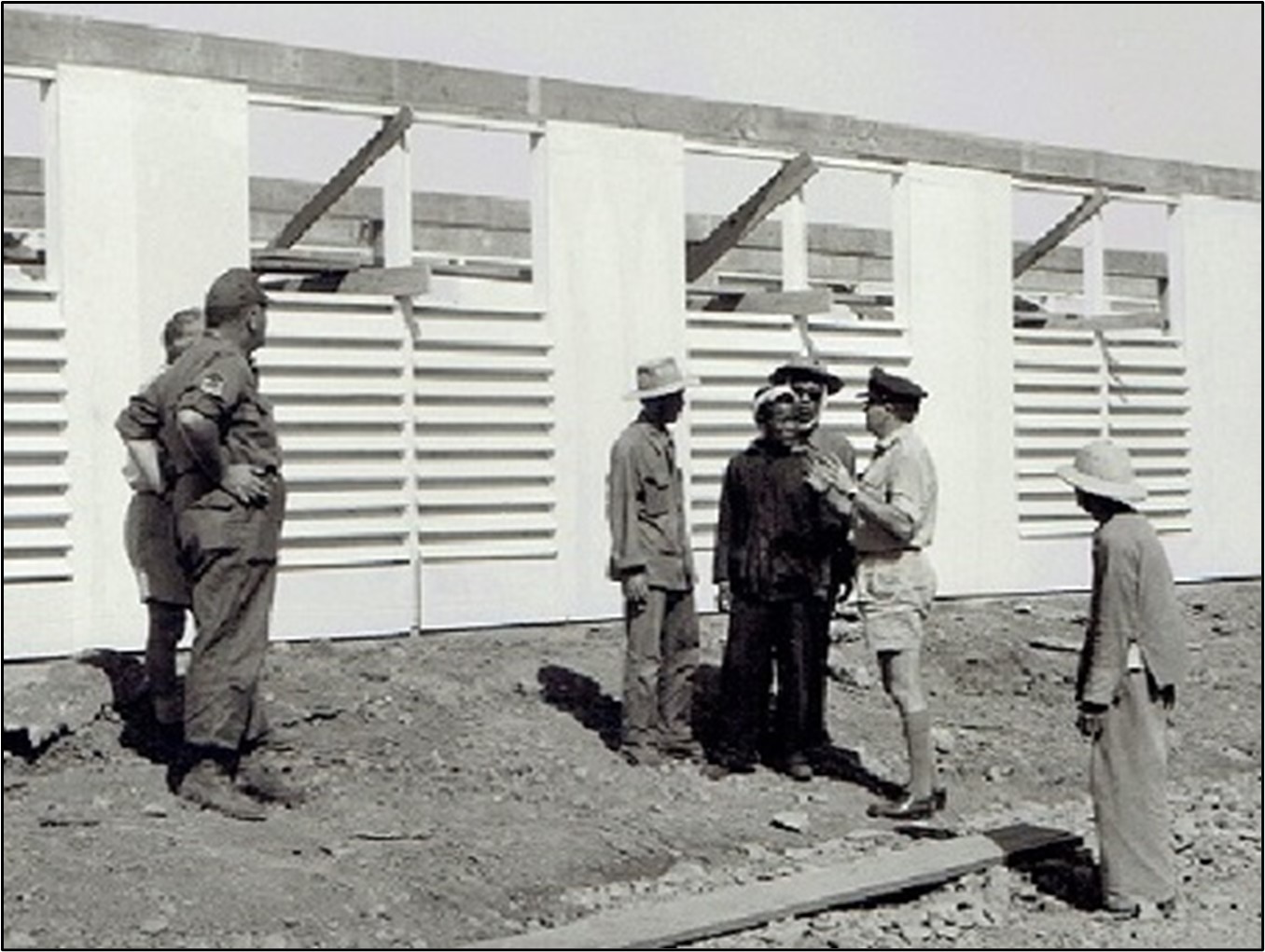

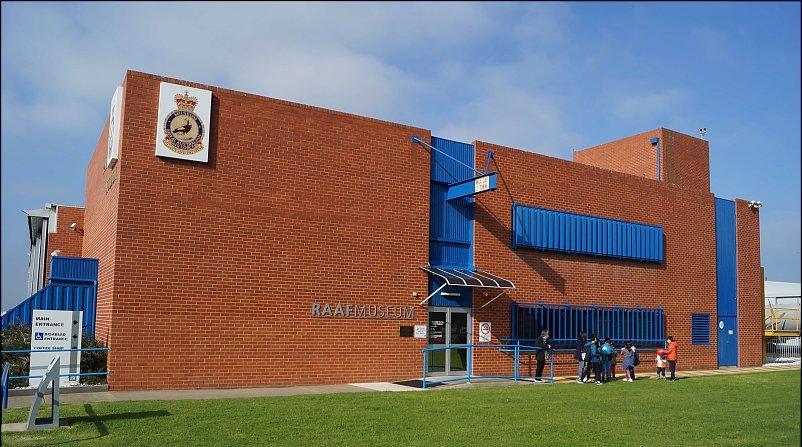
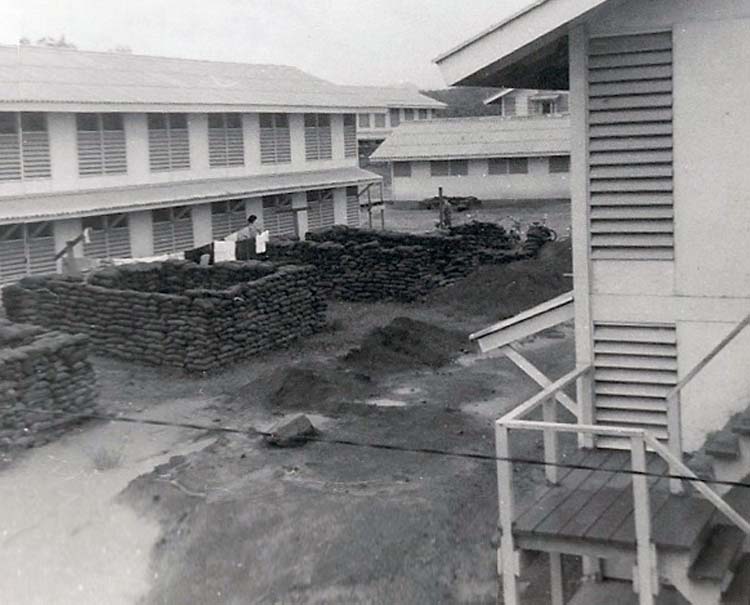
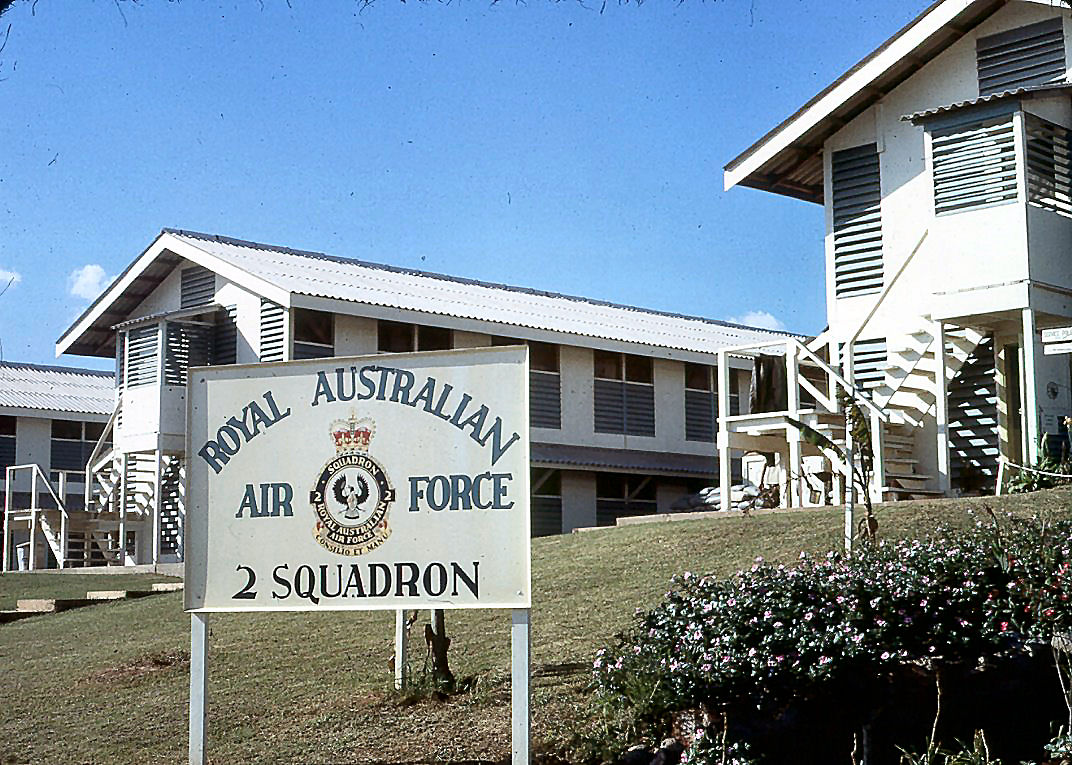
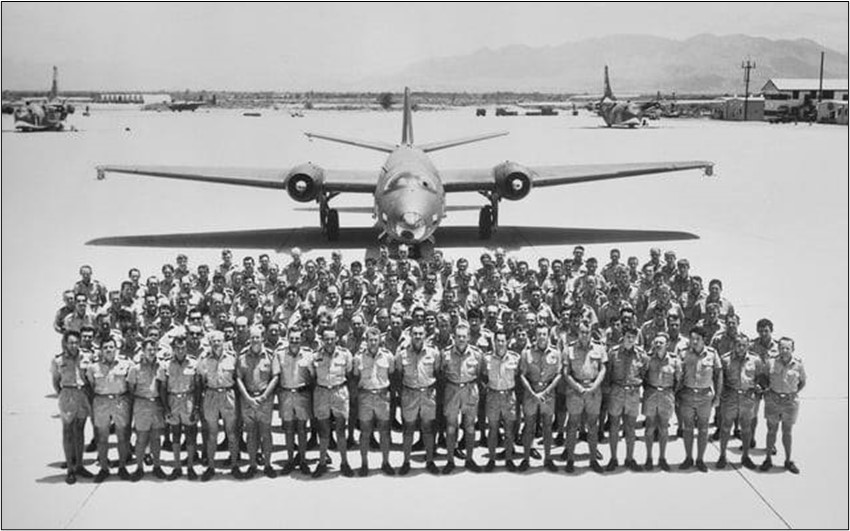
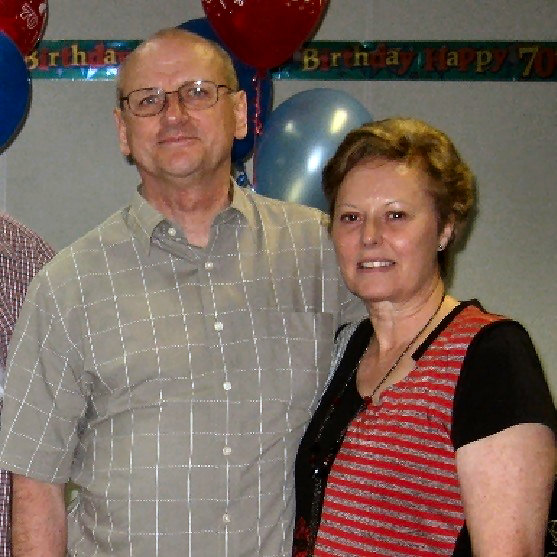
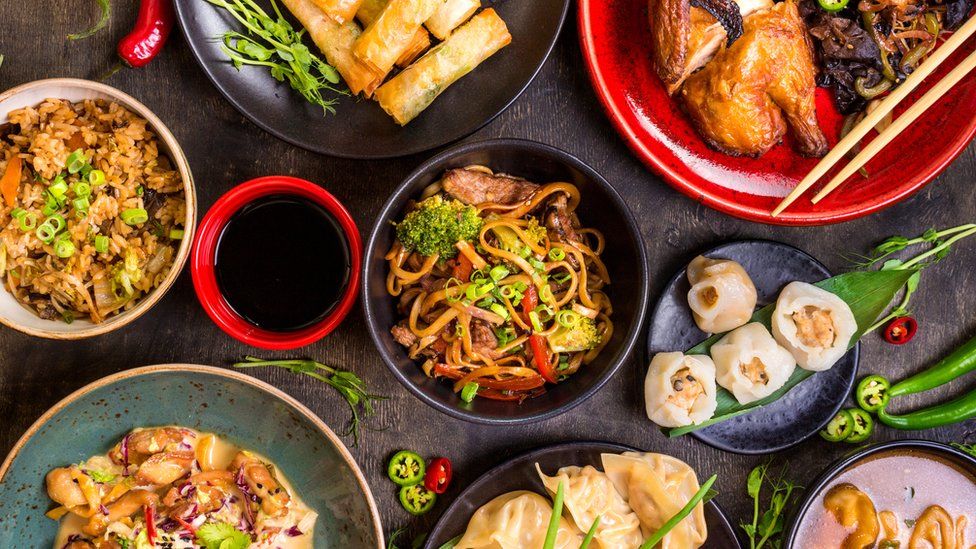
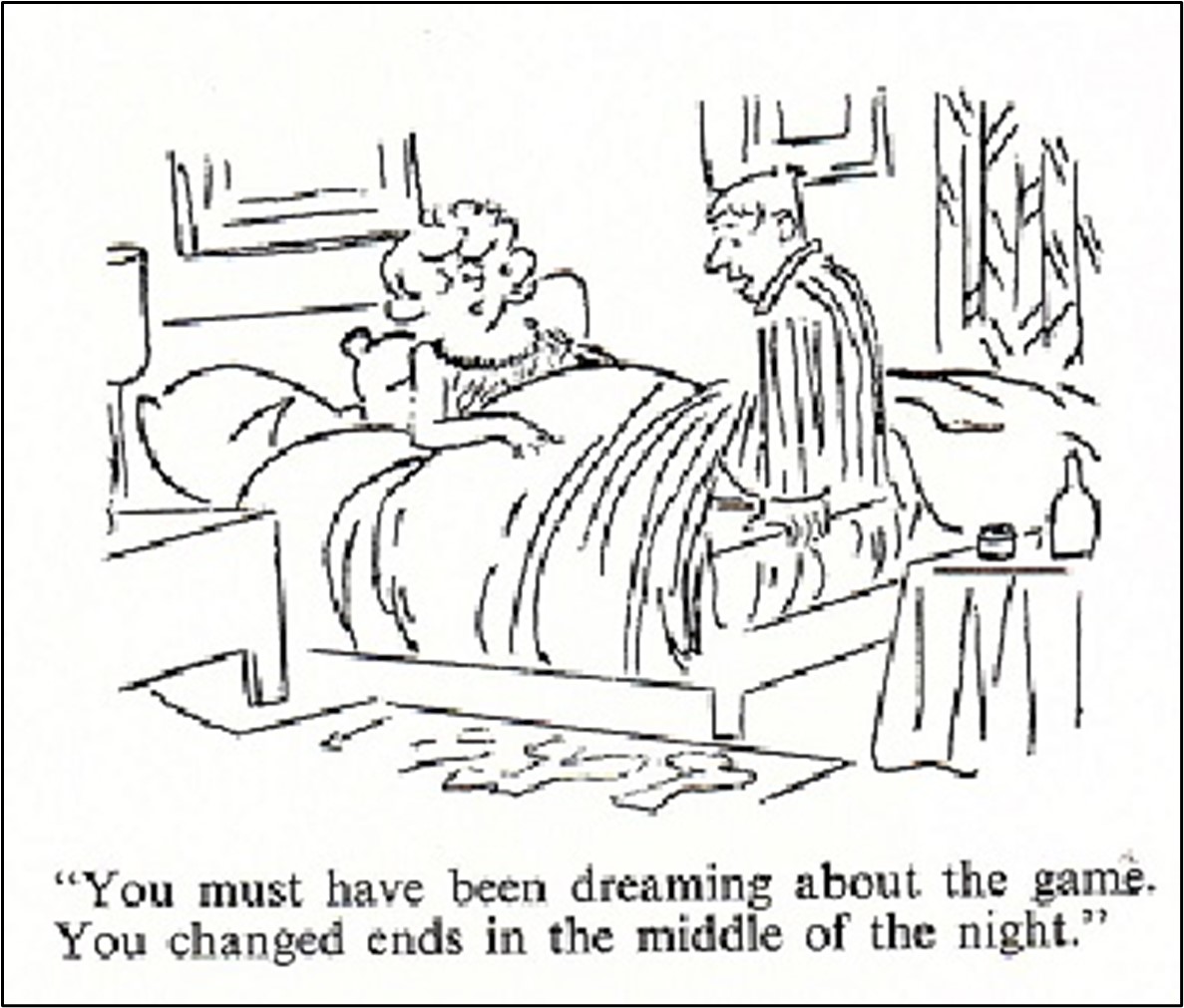 Koalas.’ I produced the weekly newsletter, ‘The Gum Leaf.’ And with a
generous donation from Rothmans, I produced a glossy edition of ‘The Gum
Leaf’ at season’s end. I also ran the line as a referee. John kept his
tattered and torn Koala’s guernsey, and I am sure Marlene still has that
at home, as John swore he would never part with it.
Koalas.’ I produced the weekly newsletter, ‘The Gum Leaf.’ And with a
generous donation from Rothmans, I produced a glossy edition of ‘The Gum
Leaf’ at season’s end. I also ran the line as a referee. John kept his
tattered and torn Koala’s guernsey, and I am sure Marlene still has that
at home, as John swore he would never part with it.